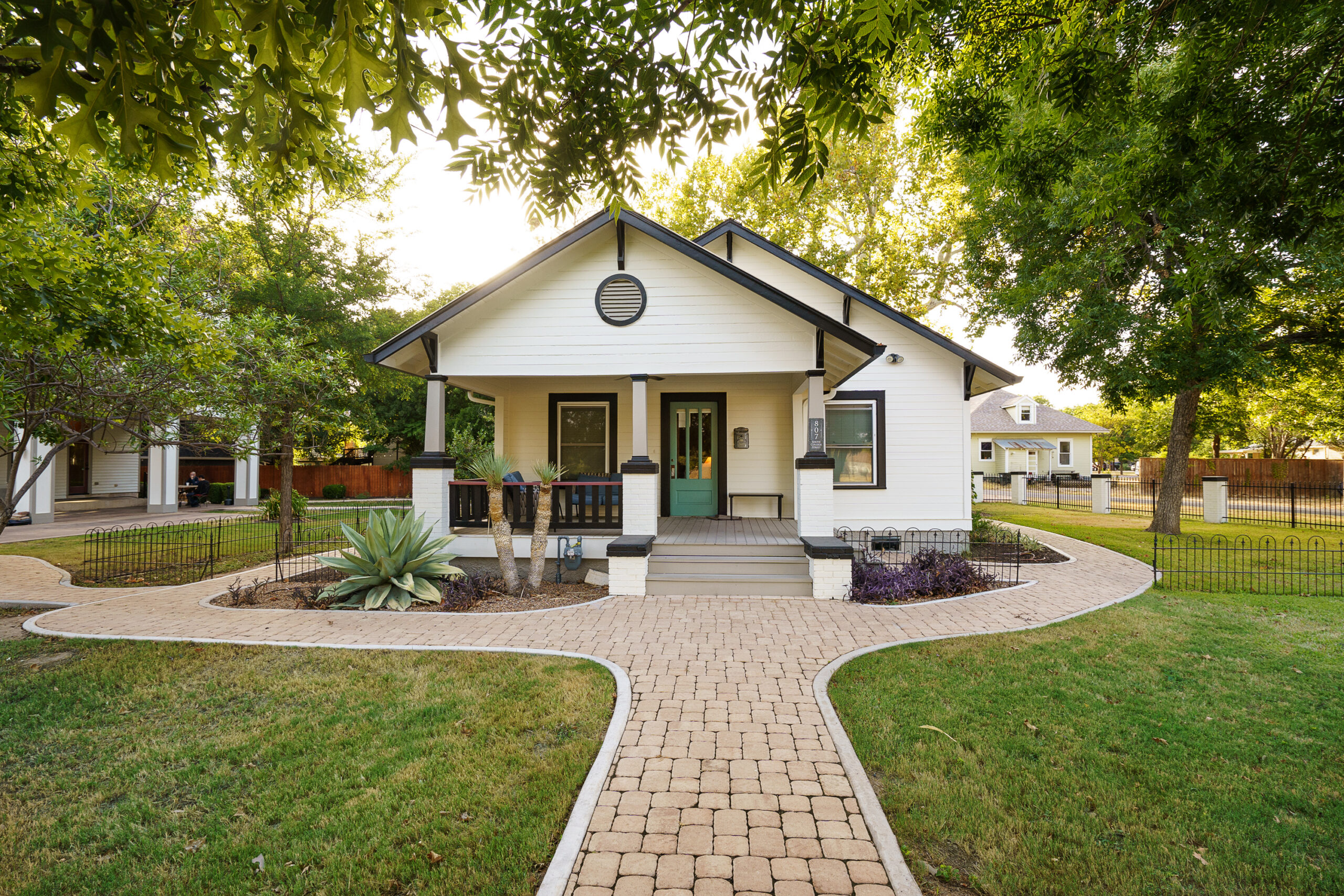Understanding Bipolar Disorder
Definition and Types of Bipolar Disorder
A comprehensive bipolar treatment program is essential for effectively managing the extreme mood swings associated with bipolar disorder. Bipolar disorder, a mental health condition marked by these extreme mood swings, involves periods of intense emotions, changes in sleep patterns, activity levels, and unusual behaviors. There are several types of bipolar disorder, including Bipolar I, Bipolar II, and Cyclothymic Disorder, each differing in the severity and duration of mood episodes.
Bipolar I disorder is characterized by at least one manic episode that may be preceded or followed by hypomanic or major depressive episodes. Bipolar II disorder involves a pattern of depressive episodes and hypomanic episodes, but not the full-blown manic episodes that are typical of Bipolar I disorder. Cyclothymic disorder, or cyclothymia, involves periods of hypomanic symptoms as well as periods of depressive symptoms lasting for at least two years (one year in children and adolescents), but the symptoms do not meet the diagnostic requirements for a hypomanic episode and a depressive episode. Bipolar treatment programs can help manage and alleviate the symptoms of these various types of bipolar disorder.
Symptoms and Diagnosis
Recognizing the symptoms of bipolar disorder is crucial for proper diagnosis and treatment. Common symptoms include:
- Manic episodes: characterized by elevated mood, increased activity, energy, or irritability, and risky behaviors.
- Depressive episodes: characterized by feelings of sadness, hopelessness, and a loss of interest in most activities.
- Rapid cycling: involving four or more episodes of mania or depression in a year.
A comprehensive evaluation by a mental health professional is essential for an accurate diagnosis. This evaluation typically includes a physical exam, a detailed psychiatric assessment, and a mood charting to track moods over a period of time. Sometimes, bipolar disorder can be mistaken for other conditions, such as depression or schizophrenia, making an accurate diagnosis even more important.
Types of Bipolar Disorder
Bipolar I
Bipolar I disorder is the most severe form of bipolar disorder. It is defined by the occurrence of at least one manic episode. Manic episodes are periods of abnormally elevated mood and high energy, accompanied by abnormal behavior that disrupts life. In some cases, these episodes can be severe enough to require hospitalization. Individuals with Bipolar I may also experience depressive episodes, but they are not necessary for a diagnosis.
Bipolar II
Bipolar II disorder is characterized by a pattern of depressive episodes and hypomanic episodes, which are less severe than the full-blown manic episodes found in Bipolar I. While hypomanic episodes can still be quite disruptive, they do not cause the significant problems in social, work, or school functioning that full mania can. Depressive episodes in Bipolar II are typically more frequent and more intense than in Bipolar I, making this form of the disorder particularly challenging to manage.
Cyclothymic Disorder
Cyclothymic disorder, or cyclothymia, involves chronic, fluctuating mood disturbances involving numerous periods of hypomanic symptoms and periods of depressive symptoms that are distinct from each other. These symptoms do not meet the criteria for hypomanic episodes and depressive episodes found in Bipolar I or II but are nonetheless persistent and significant. This form of bipolar disorder can be challenging to diagnose and often goes untreated because the symptoms may seem less severe.
Symptoms and Diagnosis
Recognizing Manic Episodes
Manic episodes are a hallmark of bipolar disorder, particularly Bipolar I. During a manic episode, individuals may exhibit an abnormally upbeat, jumpy, or wired mood, increased activity or energy, and unusual talkativeness. They might also have a reduced need for sleep, racing thoughts, distractibility, and inflated self-esteem or grandiosity. This behavior often leads to significant problems in personal and professional relationships.
Recognizing Depressive Episodes
Depressive episodes are equally critical to identify in bipolar disorder. Symptoms include a prolonged period of sadness or hopelessness, significant changes in appetite or weight, sleeping too much or too little, and a loss of interest in activities once enjoyed. These episodes can severely impact a person’s ability to function in daily life, leading to a decrease in productivity and an increase in feelings of worthlessness or guilt.
Rapid Cycling
Rapid cycling is a pattern of frequent, distinct episodes in bipolar disorder. An individual is considered to have rapid cycling if they experience four or more episodes of mania, hypomania, or depression within a year. Rapid cycling can occur in any type of bipolar disorder and is associated with a poorer prognosis because it makes the disorder more challenging to manage.
Diagnostic Process
The diagnostic process for bipolar disorder is comprehensive and involves several steps. Initially, a healthcare provider will conduct a physical exam and gather a detailed medical history to rule out other conditions. A psychiatric evaluation follows, where the individual’s mood, behavior, and family history of mood disorders are assessed. Mood charting, where the person keeps a daily record of their mood symptoms, sleep patterns, and other factors, can also be helpful in diagnosing bipolar disorder.
Types of Treatment Programs
Inpatient Programs
Inpatient programs are designed for individuals experiencing severe symptoms that require constant supervision and intensive treatment. These programs provide a safe environment where patients can receive around-the-clock care from mental health professionals. Inpatient treatment often includes a combination of medication management, psychotherapy, and other therapeutic activities designed to stabilize the patient.
Outpatient Programs
Outpatient programs are suitable for individuals who need a structured treatment plan but can still maintain their daily responsibilities. These programs typically involve regular therapy sessions, medication management, and support groups. Outpatient care is less intensive than inpatient treatment, allowing patients to live at home while receiving the support they need.
Residential Treatment Centers
Residential treatment centers offer long-term care in a controlled environment. These centers provide comprehensive care, including medical supervision and various therapeutic approaches, such as individual therapy, group therapy, and recreational activities. Residential treatment is ideal for individuals who need a structured environment to recover fully.
Intensive Outpatient Programs (IOPs)
Intensive outpatient programs (IOPs) offer a middle ground between inpatient and outpatient treatment. IOPs provide intensive treatment similar to inpatient programs but allow patients to return home each day. This flexibility is beneficial for those who need substantial support but do not require full-time care. IOPs typically include several hours of therapy each day, multiple times a week.
Partial Hospitalization Programs (PHPs)
Partial hospitalization programs (PHPs) involve spending most of the day in a treatment facility while returning home in the evening. PHPs are beneficial for patients who require more intensive care than outpatient programs but less than inpatient treatment. These programs offer a structured environment with access to medical and therapeutic support throughout the day.
Support Groups and Therapy Options
Cognitive Behavioral Therapy (CBT)
Cognitive Behavioral Therapy (CBT) is a widely used therapeutic approach in managing bipolar disorder. CBT focuses on identifying and changing negative thought patterns and behaviors that contribute to mood episodes. Through CBT, patients learn coping strategies to deal with stress and improve their emotional regulation.
Dialectical Behavior Therapy (DBT)
Dialectical Behavior Therapy (DBT) is another effective treatment for bipolar disorder. DBT combines cognitive-behavioral techniques with mindfulness practices to help individuals manage their emotions and reduce self-destructive behaviors. DBT is particularly useful for individuals with bipolar disorder who have difficulty with emotional regulation and interpersonal relationships.
Key Factors to Consider
Severity and Type of Symptoms
Selecting the appropriate bipolar treatment program depends on the severity and type of symptoms. Severe manic or depressive episodes may require inpatient care, while milder symptoms might be managed with outpatient services. Understanding the specific symptoms and their impact on daily life is crucial in determining the best treatment approach.
Patient’s Medical History and Comorbid Conditions
A thorough understanding of the patient’s medical history and any coexisting conditions (comorbidities) is crucial. Tailoring the treatment plan to address these factors can enhance overall effectiveness. For example, individuals with both bipolar disorder and substance abuse issues may require a program that offers integrated treatment for both conditions.
Availability of Specialized Therapies
Ensure the bipolar treatment program offers specialized therapies suited to your needs. This might include medication management, psychotherapy, lifestyle adjustments, and holistic approaches. Access to a variety of therapeutic options can improve treatment outcomes and help individuals develop a comprehensive plan for managing their disorder.
Quality and Qualifications of the Treatment Team
The expertise and qualifications of the treatment team significantly impact the quality of care. Look for programs with experienced psychiatrists, psychologists, and therapists specializing in bipolar disorder. A skilled team can provide effective treatment and support, increasing the chances of a successful recovery.
Treatment Program Reputation and Reviews
Research the bipolar treatment program’s reputation by reading reviews and testimonials. Positive feedback from former patients can provide valuable insights into the program’s effectiveness. Look for programs with high success rates and satisfied patients to ensure you receive quality care.
Program Affordability and Insurance Coverage
Consider the affordability of the program and whether it accepts your insurance. Financial stress should not be a barrier to receiving the necessary care. Explore all available options, including sliding scale fees, payment plans, and insurance coverage, to make treatment accessible.
Proximity and Accessibility of the Treatment Facility
Choose a treatment facility that is easily accessible for you or your loved one. Proximity can ease the logistics of attending appointments and participating in follow-up care. A conveniently located facility can reduce stress and improve adherence to the treatment plan.
Personalized Treatment Plans
Importance of Individualized Care
Every individual’s experience with bipolar disorder is unique, making personalized treatment plans crucial. Tailored care addresses specific needs, increasing the likelihood of successful outcomes. Personalized treatment plans consider the individual’s symptoms, medical history, and personal preferences, providing a more effective and holistic approach to care.
Incorporating Medications
Medication management is often a key component of a bipolar treatment program. Work with healthcare providers to determine the right medications and dosages to stabilize mood swings. Common medications include mood stabilizers, antipsychotics, and antidepressants, each playing a role in managing different aspects of the disorder.
Psychotherapy Options
Psychotherapy, including CBT and DBT, helps patients develop coping strategies and address underlying issues contributing to mood episodes. Regular therapy sessions can improve emotional regulation, reduce symptoms, and enhance overall quality of life. Finding a therapist experienced in treating bipolar disorder is essential for effective therapy.
Lifestyle Adjustments and Holistic Approaches
Incorporate lifestyle adjustments and holistic approaches, such as nutrition, exercise, and mindfulness practices, to support overall well-being. A balanced diet, regular physical activity, and stress reduction techniques can significantly impact mood stability and overall health. Holistic approaches complement traditional treatments and offer additional tools for managing bipolar disorder.

Continuity of Care and Follow-Up
Post-Treatment Support
Ongoing support following initial treatment is essential. This might include regular therapy sessions, support groups, and check-ins with healthcare providers. Continued support helps individuals maintain stability and prevent relapse. Building a strong support network of family, friends, and mental health professionals is crucial for long-term management.
Relapse Prevention Plans
Developing a relapse prevention plan helps patients recognize early signs of mood swings and take proactive steps to prevent full-blown episodes. These plans often include identifying triggers, maintaining a consistent routine, and having a list of coping strategies readily available. A well-structured plan can reduce the likelihood of relapse and provide a sense of control.
Long-Term Management and Monitoring
Long-term management and monitoring ensure sustained stability and quality of life. Regular follow-ups with mental health professionals are vital to staying on track. Continuous monitoring allows for timely adjustments to the treatment plan, ensuring it remains effective and aligned with the individual’s evolving needs.
FAQs
What are the main types of bipolar disorder?
The main types of bipolar disorder are Bipolar I, Bipolar II, and Cyclothymic Disorder. Each type varies in the severity and duration of mood episodes.
How is bipolar disorder diagnosed?
Bipolar disorder is diagnosed through a comprehensive evaluation that includes a physical exam, psychiatric assessment, and mood charting. A mental health professional considers the patient’s symptoms, medical history, and family history to make an accurate diagnosis.
What treatments are available for bipolar disorder?
Treatment options for bipolar disorder include medication management, psychotherapy (such as CBT and DBT), lifestyle adjustments, and holistic approaches. Inpatient, outpatient, residential, intensive outpatient, and partial hospitalization programs are also available.
How can support groups help individuals with bipolar disorder?
Support groups provide a platform for individuals with bipolar disorder to share experiences, gain support, and learn from others facing similar challenges. These groups can reduce feelings of isolation and provide valuable coping strategies.
What factors should be considered when choosing a bipolar treatment program?
Factors to consider include the severity and type of symptoms, medical history, availability of specialized therapies, qualifications of the treatment team, program reputation, affordability, and proximity to the treatment facility.
Why is personalized treatment important for managing bipolar disorder?
Personalized treatment plans are crucial because they address the unique needs and experiences of each individual. Tailored care increases the likelihood of successful outcomes by considering specific symptoms, medical history, and personal preferences.
Finding Personalized Care
Choosing the right bipolar treatment program involves considering several factors, from the severity of symptoms to the reputation of the treatment team. Personalized care and ongoing support are key to managing bipolar disorder effectively. If you or someone you love is struggling with bipolar disorder, it’s essential to seek professional advice. To learn more, call us at 512-846-9728 or visit our website Alta Loma.






